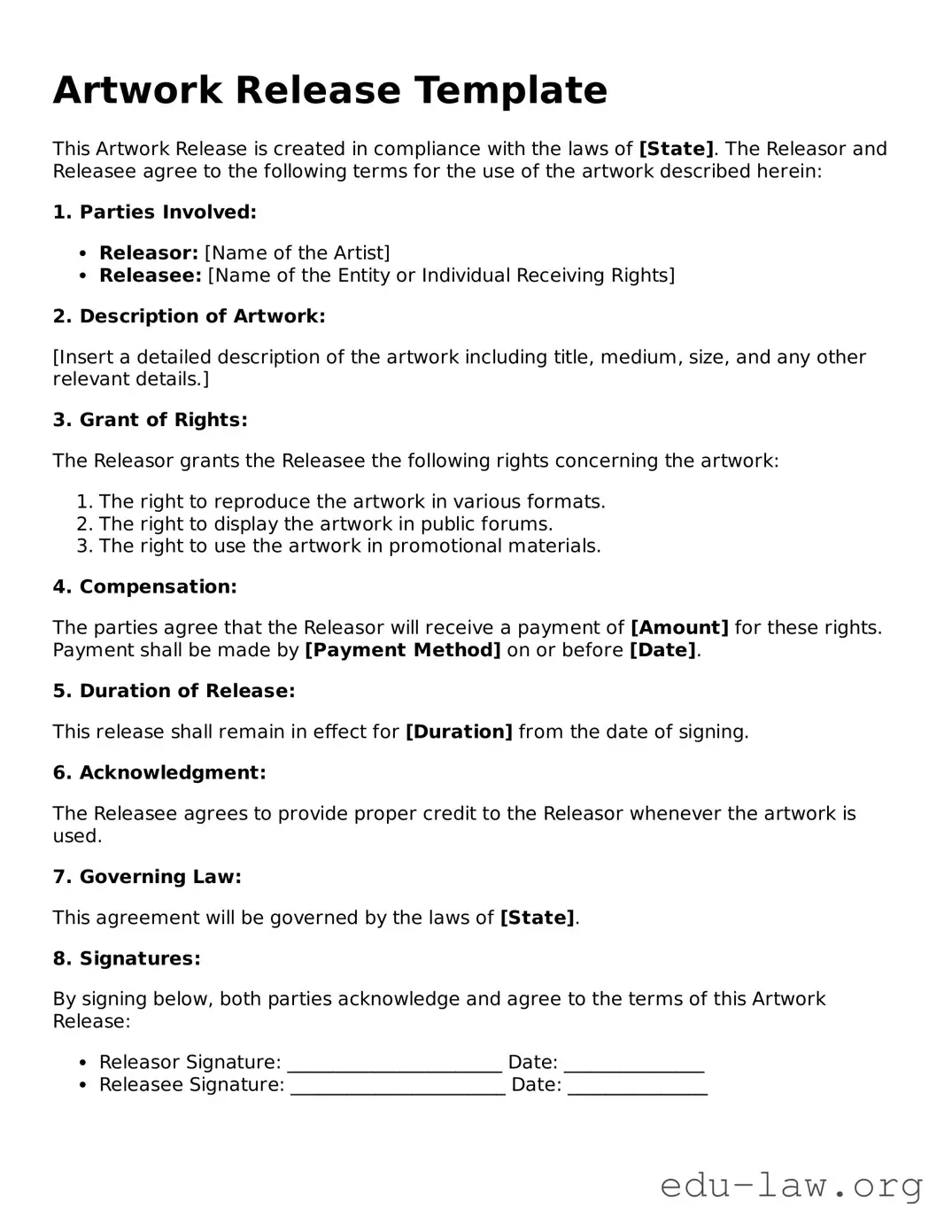What is an Artwork Release form?
An Artwork Release form is a legal document that grants permission from an artist or creator to another party (such as a publisher, gallery, or individual) to use their artwork. This form outlines the specific rights being transferred, ensuring that both parties understand how the artwork can be used, displayed, or reproduced.
Why do I need an Artwork Release form?
If you plan to use someone else's artwork—whether for commercial purposes, promotional activities, or personal projects—an Artwork Release form is essential. It protects the artist’s rights while providing you with the legal authority to use the artwork as specified. Without this document, you risk potential copyright infringement issues.
Who should sign the Artwork Release form?
Typically, the artist (or rights holder) will sign the form to grant permission. The person or organization wishing to use the artwork will also sign, confirming their understanding and acceptance of the terms. Both parties should keep a copy for their records to prevent any misunderstandings in the future.
What details are included in an Artwork Release form?
An effective Artwork Release form usually includes the names of the parties involved, a description of the artwork in question, the specific rights being granted (such as reproduction or display rights), and any limitations on how the artwork can be used. It may also specify any compensation, if applicable, to the artist for their work.
Is an Artwork Release form necessary for personal use?
Can an Artwork Release form be revoked?
Yes, in certain circumstances an Artwork Release form can be revoked, but this usually depends on the terms outlined in the form itself. If the agreement includes specific conditions under which the release can be terminated or if the artist feels their rights are being infringed upon, they may choose to revoke permission. It’s crucial to clearly define these terms in the release to avoid confusion later on.
What happens if I don’t use an Artwork Release form?
Without an Artwork Release form, you may face risks, including legal action from the artist or rights holder. This could result in demands for compensation or even the removal of the artwork from public spaces. Not having a release form can lead to significant financial and reputational repercussions, so it’s always safer to have the proper documentation.
Can I create my own Artwork Release form?
Absolutely! You can draft your own Artwork Release form, but ensure it covers all necessary aspects, including the scope of use, time limitations, and any compensation. While templates are available online, customizing the form can provide clarity and better protect your rights. If needed, consulting a legal professional can help ensure that the document meets all requirements.
